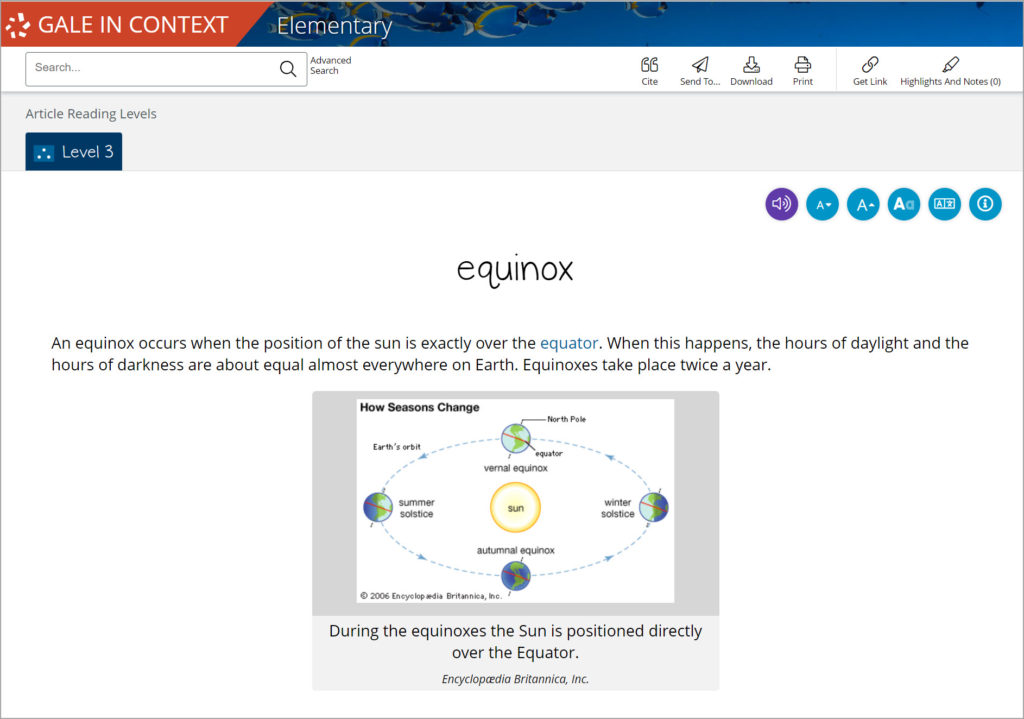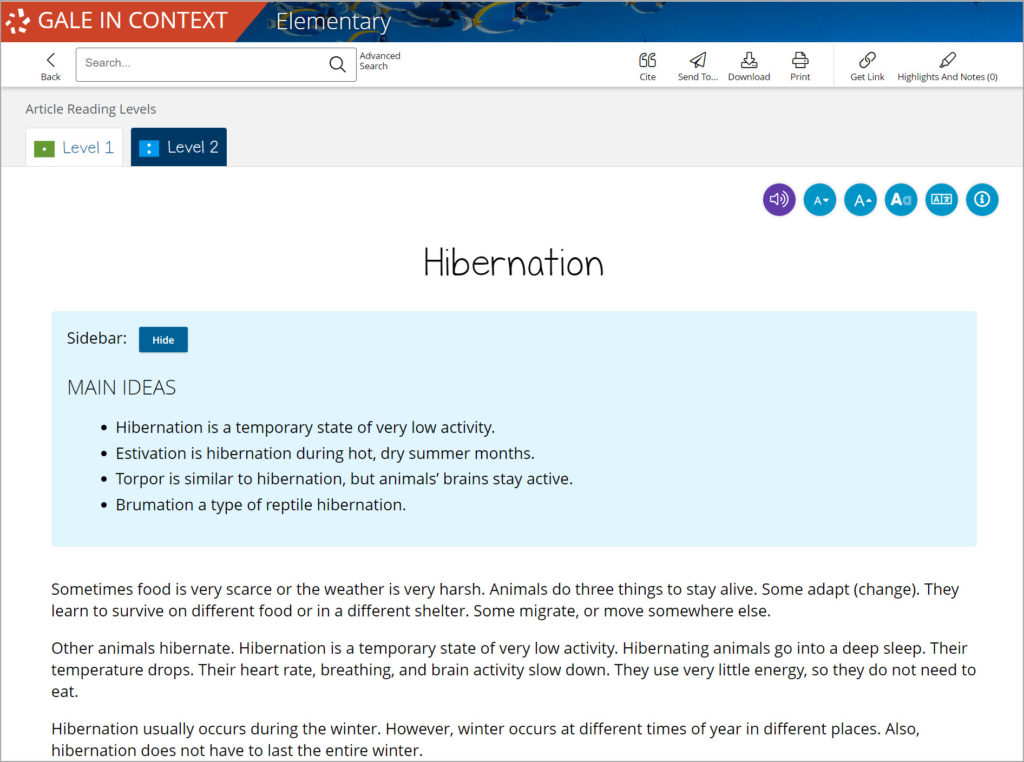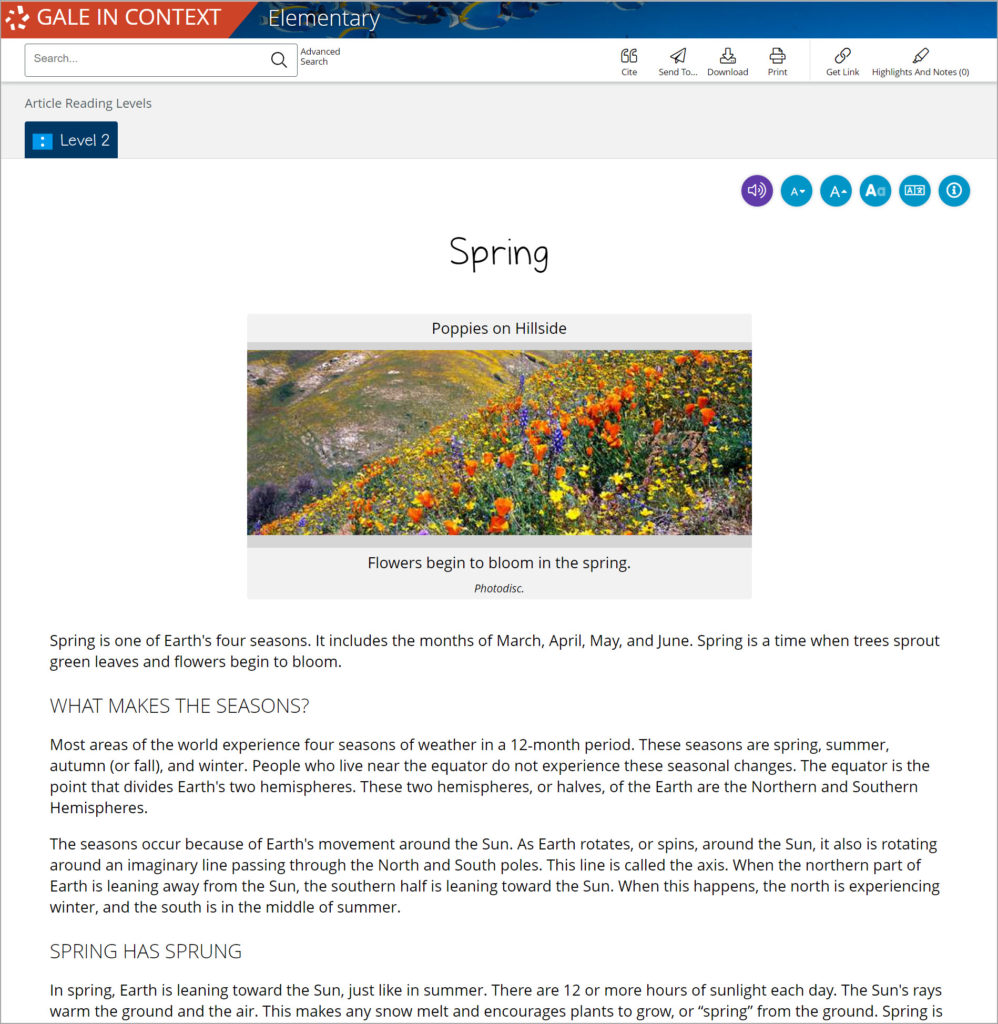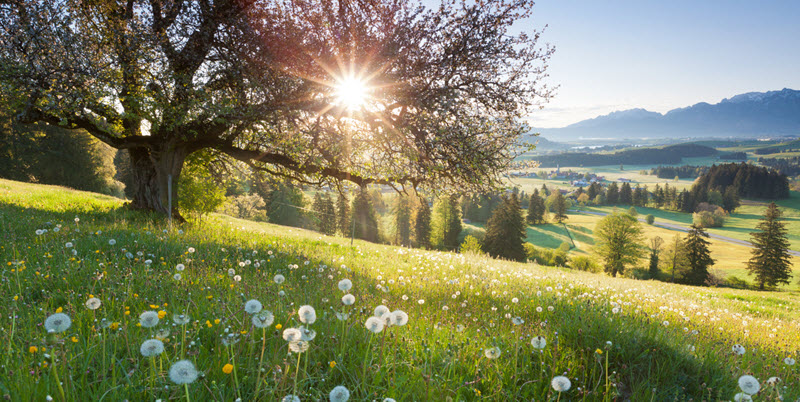| By Gale Staff |
Monday, March 20, marks the first day of spring in 2023. Help your young learners shake off their winter blues with some creative activities that celebrate the change of seasons.
The first day of spring is also called the vernal equinox. An equinox, which means “equal night” in Latin, is a specific astronomical moment when sunlight hits the Earth directly on the Equator, leading to exactly 12 hours of daylight and 12 hours of nighttime. During the winter months in the northern hemisphere, the Earth tilts away from the sun, causing longer nights and shorter days. As the Earth rotates around the sun, the orientation of the tilt changes. The vernal equinox marks the beginning of the northern hemisphere’s orientation toward the sun, which extends our average daylight and raises temperatures.

These concepts can get a little abstract for elementary-aged children, but Gale In Context: Elementary can help your young students better understand the astronomical science and cultural significance of the spring equinox. Gale curates age-appropriate collections on a range of topics, so teachers can feel confident that the information their students find is accessible for their reading level. Gale’s collection for the first day of spring includes kid-friendly news pieces and magazine articles that support the learning of more challenging topics.
Encourage Students to Begin Again
Different cultures around the world recognize the first day of spring, and you and your students can discuss some of these cool customs. For example, on the morning of the spring equinox, many people gather at Stonehenge in England to watch the sunrise over the mysterious stone monument. A similar gathering occurs at the Mayan archaeological site, Chichén Itzá, in Mexico. During this time, people everywhere feel spring fever, a psychological sense of renewal and energy.
For many families, the first day of spring is a time to create a fresh start. As the season changes, spring cleaning is a popular activity. In your classroom, consider allowing students some free time to clean out their desks and get organized for the final few months of school. You might also want to integrate arts and crafts in your lesson by allowing students to create new nameplates for their desk space or artwork to hang around the classroom in honor of spring.
Activity Idea: Have students write about a fresh start they’re hoping to have in spring. Maybe they need to make a renewed commitment to their homework. Some might want to try a new sport or activity. The first day of spring is a great opportunity to create reinvigorated promises for the coming year.
Get Your Hands Dirty
Depending on the climate in which you live, you might see some new life growing from the ground on the first day of spring. As the days grow longer, you’ll hear more birds singing and bees buzzing. Animals come out of hibernation as the frost thaws. Teachers can leverage the first day of spring to develop science-based or environmental-studies-based lesson plans. Why not go outside with your students for a spring equinox nature walk to see what you can see? Make a list of what you observe.

Activity Idea: The beginning of spring is a time to start seeds and watch them sprout together as a class. Students can keep a diary that illustrates the different phases of their seedlings coming to life. Then, in April or May, students can plant their sprouts in the school garden or take them home to plant.
Kick Off the Season with a Research Project
Use the first day of spring as a springboard for a larger project. Assign students a longer book or a more complex research assignment or encourage them to create a submission for a science fair or writing competition. The end of the school year will be here before you know it—take advantage of the vernal equinox and encourage your students to take on a new challenge.
Need help? Gale In Context: Elementary has thousands of resources related to the spring season, including images, books, and videos (like this fun lesson in pollinator gardening)—start with the spring overview! Gale’s advanced search features guide students toward a more in-depth study of a specific topic. These tools help them practice research skills that are essential to their future academic success.

Whatever direction you take, the vernal equinox is a chance to spring back from the winter months and finish the year strong. Let Gale In Context: Elementary help you develop exciting ideas for your spring-themed lesson plans.
Not yet a Gale In Context: Elementary subscriber? Learn more about this kid-friendly database!

